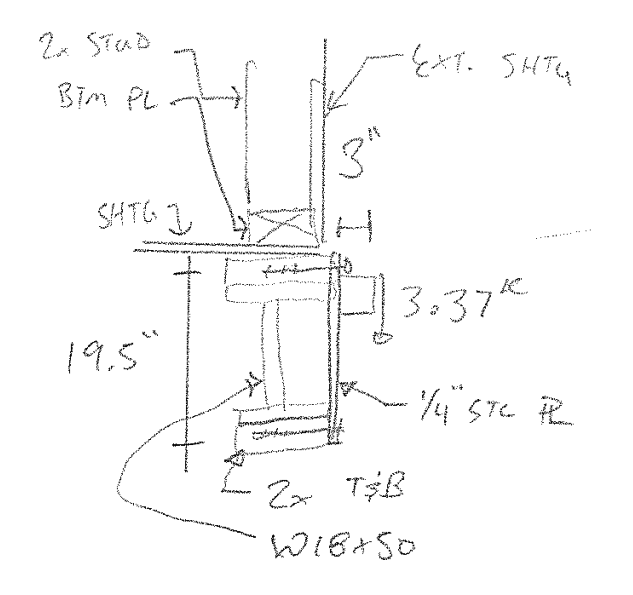Bowsers
Structural
- Nov 19, 2019
- 35
Hello!
I’m back with another wood connection question.
I’m working on a balcony attachment plate. The steel plate is ¼” thick. The original plan was to have it attach to the wood nailers at the top and bottom of the steel wide flange beam using lag bolts. It appears my loads are overstressing the wood(max allowable shear is 517#/bolt, and I’m getting 567 # demand/bolt).
My question is am I using the proper modification factors? I want to use a ½” lag in the middle of a 2x nailer. Are there edge distance reductions that I need to take?
As far as I can see, a ½” diameter bolt needs ¾” edge distance, which is centered on a 2x nailer, so perfect. Once I confirm my connection capacity, I will be able to update the plate size and number of holes.
I have used the AWC wood connection calculator to determine the capacity of the wood.
Thank you.
I’m back with another wood connection question.
I’m working on a balcony attachment plate. The steel plate is ¼” thick. The original plan was to have it attach to the wood nailers at the top and bottom of the steel wide flange beam using lag bolts. It appears my loads are overstressing the wood(max allowable shear is 517#/bolt, and I’m getting 567 # demand/bolt).
My question is am I using the proper modification factors? I want to use a ½” lag in the middle of a 2x nailer. Are there edge distance reductions that I need to take?
As far as I can see, a ½” diameter bolt needs ¾” edge distance, which is centered on a 2x nailer, so perfect. Once I confirm my connection capacity, I will be able to update the plate size and number of holes.
I have used the AWC wood connection calculator to determine the capacity of the wood.
Thank you.

